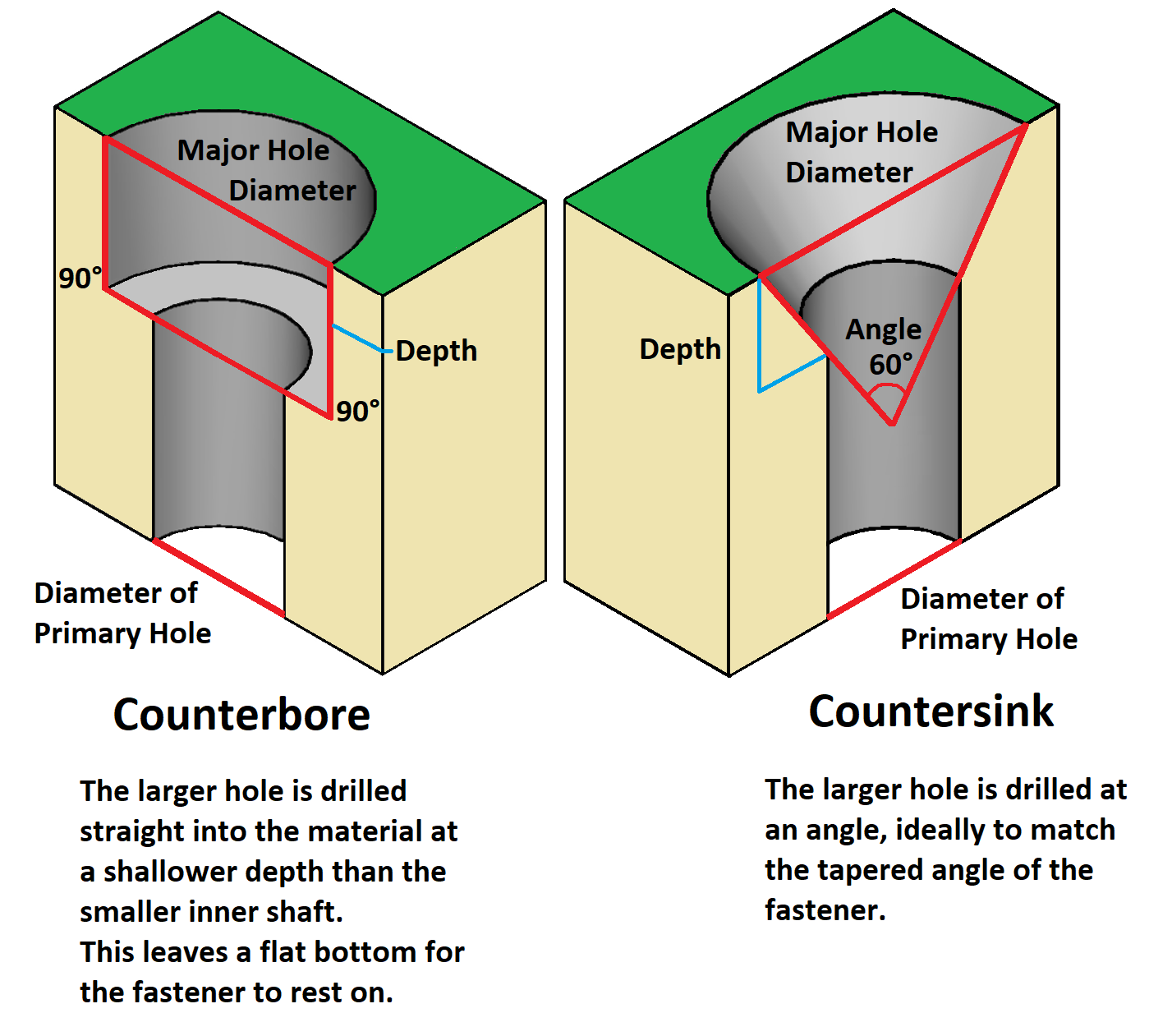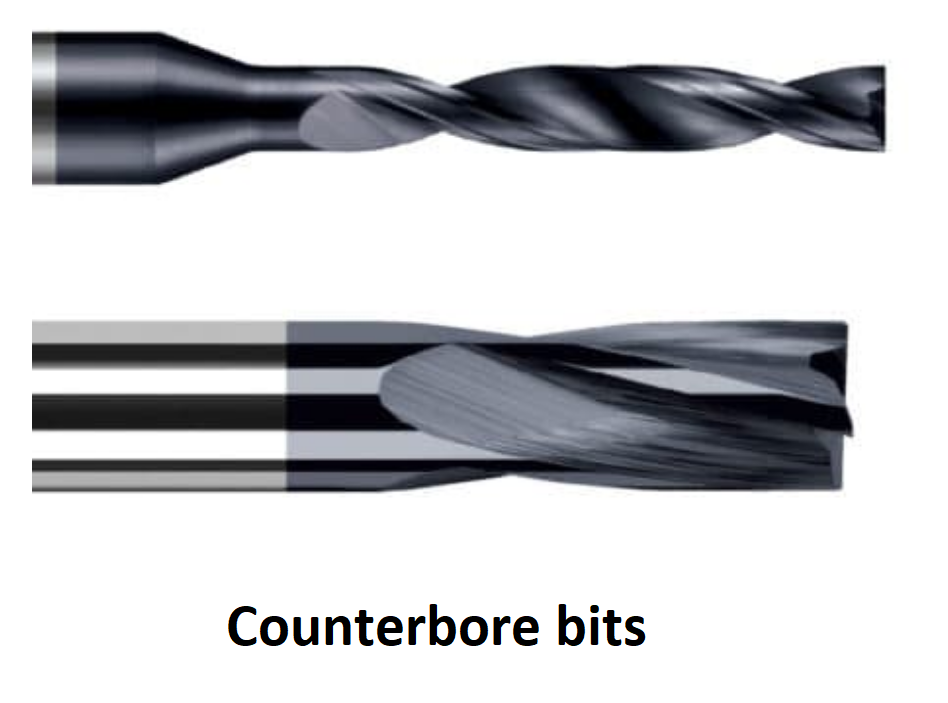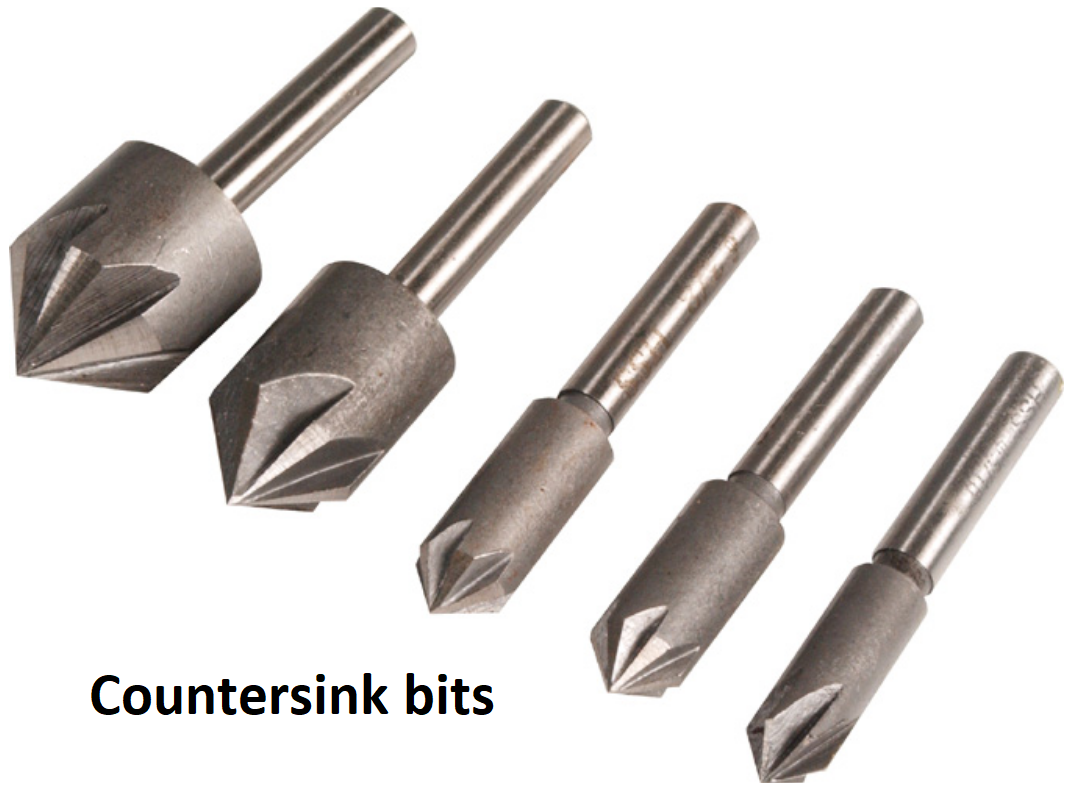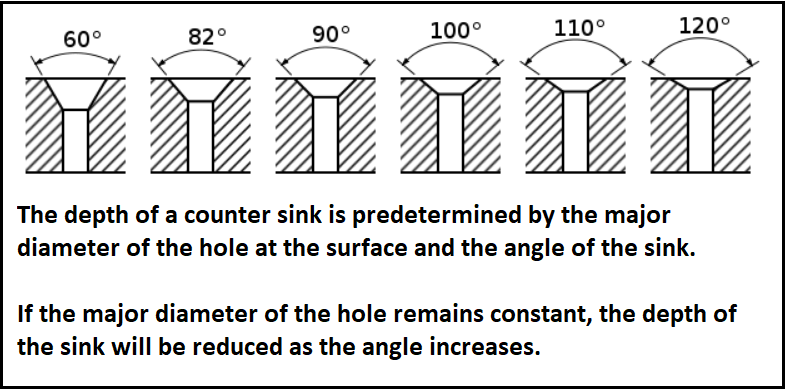PCB-TIPS
Accepted File Formats
Array Design
CAM Tooling Guidelines
Controlled Dielectric or Controlled Impedance?
Countersink vs Counterbore
Default Rigid PCB Specs
Dielectric Stacks
Drilling and Drill File
Fabrication Drawing/Fab Print
Final Finish Comparison
How Thick Is 1oz Copper?
How to Avoid Engineering CAM Hold
Minimizing Bow and Twist
Solder Mask
Via Tenting, Plugging, and Filling
What is Copper Thieving?
What is the difference between a Countersink and a Counterbore?
Countersinks and counterbores serve the same purpose, to allow the head of a screw or other fastener to lie flush with, or just below the surface of the material into which they are inserted. The difference between them is the angle at which the larger hole is drilled. A countersink's larger hole is tapered at an angle; whereas a counterbore is drilled straight into the material and leaves a flat bottom between the counterbore and the narrower inner shaft.
Counterbore
 The information needed for each type is almost identical with a few exceptions. A counterbore, by definition, is drilled straight down with no taper, so we don't need to know the angle.
The information needed for each type is almost identical with a few exceptions. A counterbore, by definition, is drilled straight down with no taper, so we don't need to know the angle.
- On which side of the board is the bore? Top or Bottom?
- Should the hole walls be plated or non-plated?
- The finished diameter of the narrow inner shaft of the hole. (Primary Drill)
- Major Diameter (Finished diameter of the hole at the surface)
- Depth the counterbore is to be drilled

Countersink
 Since a countersink is not drilled straight into the material, we need to know the intended angle. For all the math nerds out there, you've no doubt noticed the major hole diameter and the angle form a triangle. The depth the countersink will be drilled is predetermined by the angle, major and primary diameters, however listing your expected depth is a good reality check.
Since a countersink is not drilled straight into the material, we need to know the intended angle. For all the math nerds out there, you've no doubt noticed the major hole diameter and the angle form a triangle. The depth the countersink will be drilled is predetermined by the angle, major and primary diameters, however listing your expected depth is a good reality check.
- On which side of the board is the sink? Top or Bottom?
- Should the hole walls be plated or non-plated?
- The finished diameter of the narrow inner shaft of the hole. (Primary Drill)
- Major Diameter (finished diameter of the hole at the surface)
- Angle of the tapered drill.
- Depth the countersink is to be drilled.
